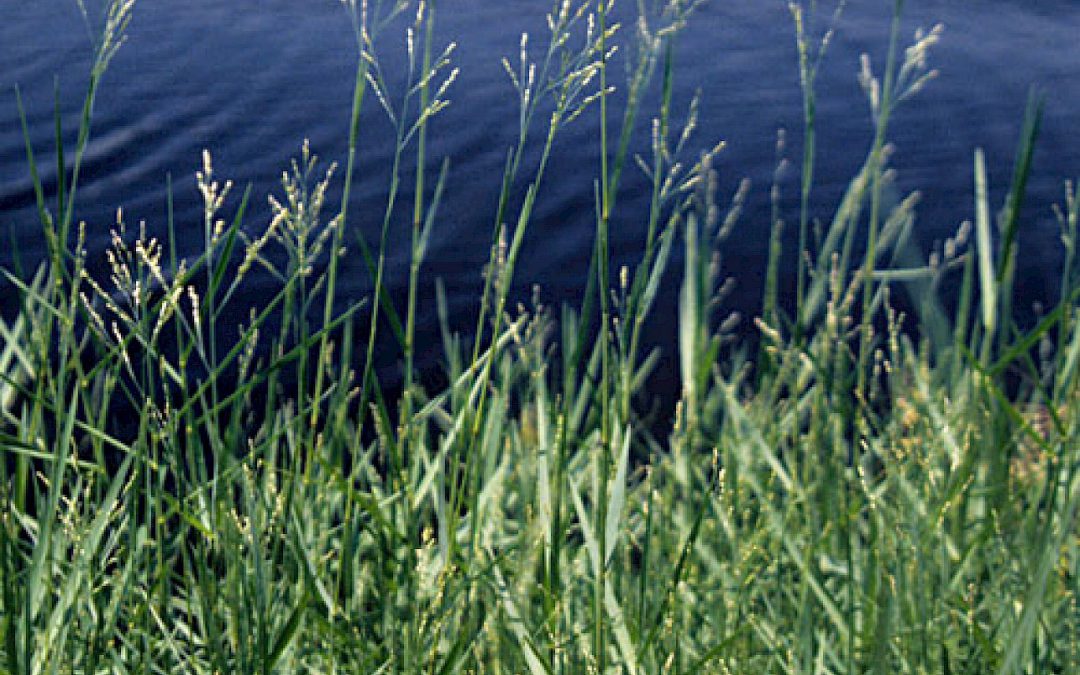
by Rick O'Connor | May 21, 2021
Six Rivers “Dirty Dozen” Invasive Species
Torpedograss (Panicum repens)
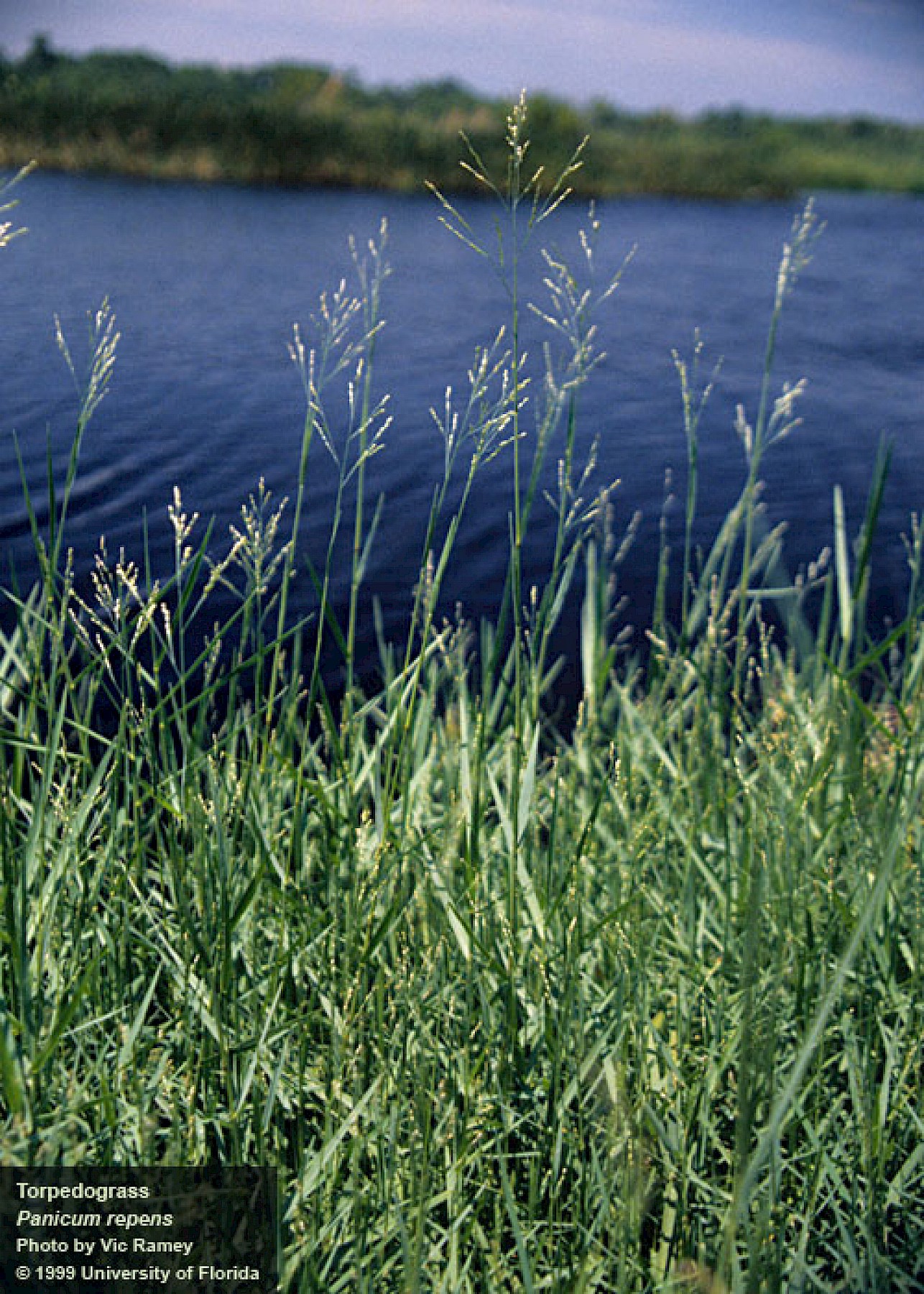
Torpedograss
Photo: University of Florida
Define Invasive Species: must have all of the following –
- Is non-native to the area, in our case northwest Florida
- Introduced by humans, whether intentional or accidental
- Causing either an environmental or economic problem, possibly both
Define “Dirty Dozen” Species:
These are species that are well established within the CISMA and are considered, by members of the CISMA, to be one of the top 12 worst problems in our area.
Native Range:
Africa and Asia.
Introduction:
Torpedograss was initially introduced prior to 1876 in seed for forage. In the early 1900s the USDA introduced the plant as a forage crop for pastures.
EDDMapS currently list 13,900 records of this plant. They range throughout the coastal states of the southeastern U.S. but most (96%) are in Florida and those records spread across the entire state from Pensacola to the Florida Keys.
Within our CISMA there are 2262 records, most are in Okaloosa County. The extent is probably underreported.
Description:
It is a tall grass reaching a height of 3-4 feet and grows along the shorelines, though it has on occasion been found more inland. The leaves are thin, stiff, flat, and “hairy” on the top and around the sheath. It has a waxy coating that appears “whiteish” and the leaves may fold. It has an extensive rhizome system that can grow deep into the ground and ends in a sharp point, where it gets its common name “torpedograss”. The flowers are a panicle-type inflorescence extending from the top of the plant.
Issues and Impacts:
This is an aggressively growing plant dispersing primarily from fragmentation and expansion of the sharp-pointed rhizome system. It quickly forms dense mats and out competes native grasses, many times forming monocultures along the shoreline where native plants have been removed. By 1992 it was reported in 70% of Florida’s public waterways, restricting waterflow, recreational use, and has become particularly problematic on golf courses.
Management:
Torpedograss spreads primarily by extended their rhizomes, or fragments of these rhizomes. When removing from the shoreline it is important to remove ALL of the rhizomes or the plant will return. It is also important not to spread fragments of these rhizomes while mowing or weed-eating the plant.
It is most aggressive in open disturbed areas. After mowing or burning land is when dense patches emerge. Maintaining a diversity of native shoreline grasses will help impede dispersal and growth.
Mowing and disking have not been very effective. In fact, disking may cut and spread the rhizomes.
When choosing chemical treatment, glyphosate has been every effective. However, this chemical is non-selective and overspray can kill native plants you wish to keep. Also, the plant is often in the water and an aquatic version of glyphosate should be used. When using near water read all instructions carefully to avoid killing other aquatic plants. Since the rhizomes can grow deep, and are at times submerged, re-treatment may be needed.
There are no biological agents currently approved for torpedograss management but cattle and goats both will eat the plant. Though it does not always remove the rhizomes, grazing can be a method of control.
For more information on this Dirty Dozen species, contact your local extension office.
References
Torpedograss, University of Florida IFAS Center for Aquatic and Invasive Plants
https://plants.ifas.ufl.edu/plant-directory/panicum-repens/.
Early Detection and Distribution Mapping System (EDDMapS)
https://www.eddmaps.org/
Six Rivers CISMA
https://www.floridainvasives.org/sixrivers/
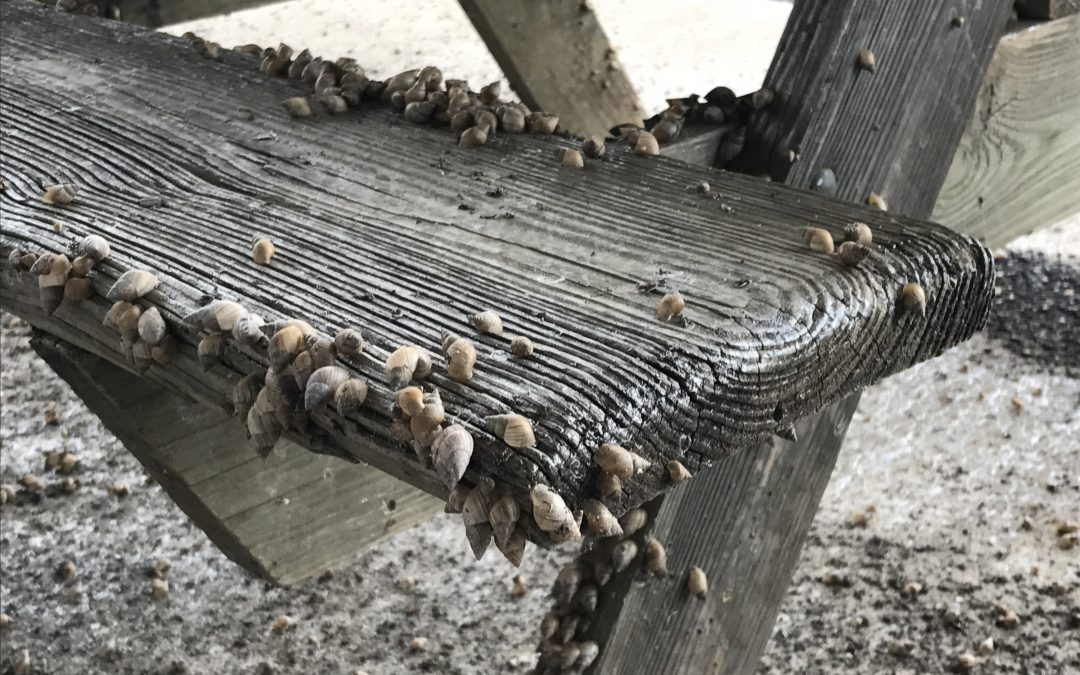
by Rick O'Connor | May 5, 2021
EDRR Invasive Species
Land Snail (Bulimulus sporadicus)
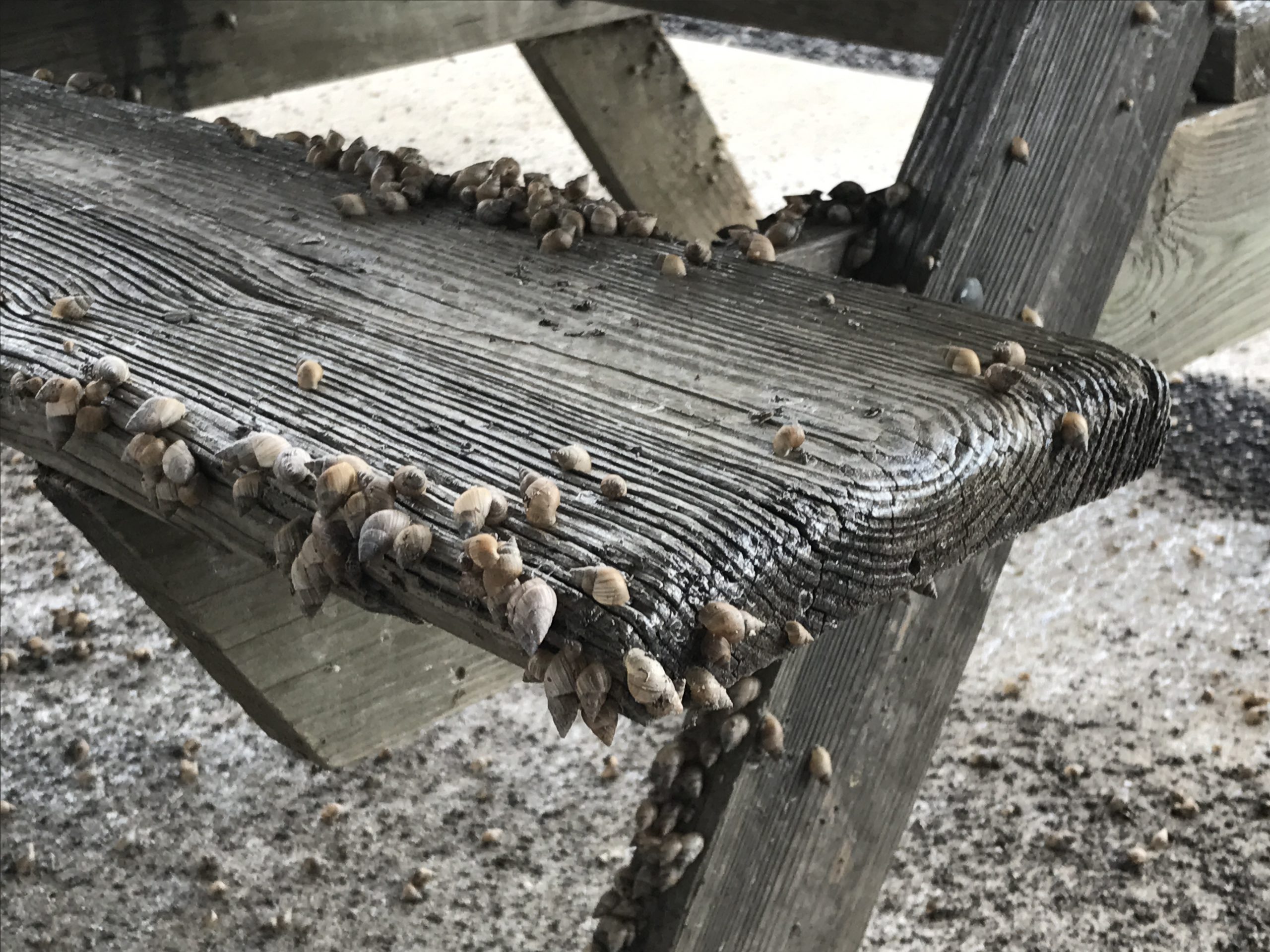
Bulimulus sporadicus
Photo: University of Florida
Define Invasive Species: must have ALL of the following –
- Is non-native to the area, in our case northwest Florida
- Introduced by humans, whether intentional or accidental
- Causing either an environmental or economic problem, possibly both
Define EDRR Species: Early Detection Rapid Response. These are species that are either –
- Not currently in the area, in our case the Six Rivers CISMA, but a potential threat
- In the area but in small numbers and could be eradicated
Native Range:
Bulimulus sporadicus is native to the West Indies.
Introduction:
There appears to have been multiple points of entry into Florida. It was first identified in Florida by Dr. Harry G. Lee, who discovered the snail in Duval County in 2009. Additional surveys found four different populations all associated with the CSX railways. It is believed the snail was introduced via the railway cars coming from Mexico. Populations began to appear both north and south of the original location, all near the CSX railways. The animal has been reported from central and south Florida, as well Georgia, Alabama, Mississippi, and Northwest Florida.
EDDMapS currently list only 2 records of Bulimulus sporadicus. One in central and another in south Florida. There are no EDDMapS records of the snail in the Florida panhandle, but it has been reported in Pensacola and Panama City. There are no records within the Six Rivers CISMA but it is believed to be here. Records of this animal is certainly under reported.
Description:
This is a small (3/4 – 1”) land snail. It has a conical shell that is light brown to tan in color. They are often found near gardening areas and seem to like the high humidity and moist conditions here.
Issues and Impacts:
A 2018 publication from the Center for Invasive Species and Ecosystem Health noted that it was not designated as invasive in any state, nor the federal level. However, with the relatively new introduction and wide spread of this species it warrants observation.
Management:
There are no management plans for this snail at this time. Chemical treatment of plants to reply the snail are not recommended. It appears the snail prefers the leaf litter within the mulch rather than the live plants. Snail baits, and other pesticides, can be harmful to pets and native wildlife and are not recommended. They do like mulched areas within gardens and if the home owner is having a serious problem, management of this type of habitat may be needed.
For more information on this EDRR species, contact your local extension office.
References
Stauderman, K. 2020. A Snail That Rode the Rails. UF/IFAS Extensions Volusia County Blog. http://blogs.ifas.ufl.edu/volusiaco/2020/04/07/a-snail-that-rode-the-rails/.
Snail (Bulimulus sporadicus, O’Brigny 1835). 2018. Center for Invasive Species and Ecosystem Health. https://www.invasive.org/browse/subinfo.cfm?sub=78908.
Early Detection and Distribution Mapping System (EDDMapS)
https://www.eddmaps.org/
Six Rivers CISMA
https://www.floridainvasives.org/sixrivers/
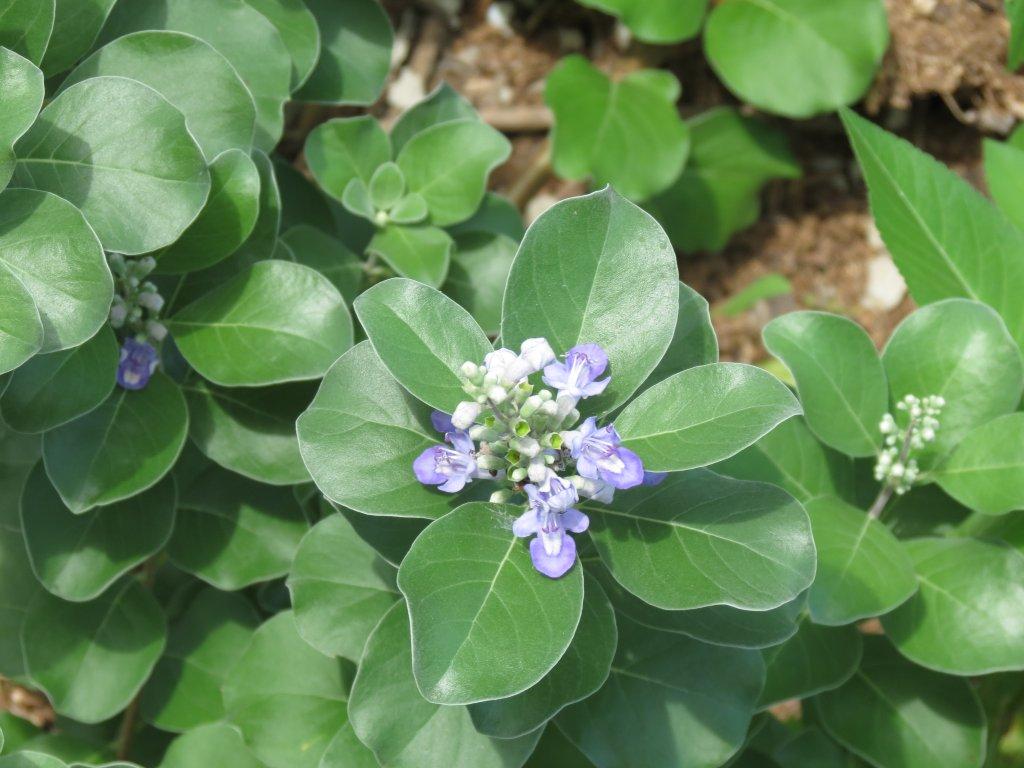
by Rick O'Connor | Apr 8, 2021
EDRR Invasive Species
Beach Vitex (Vitex rotundfolia)
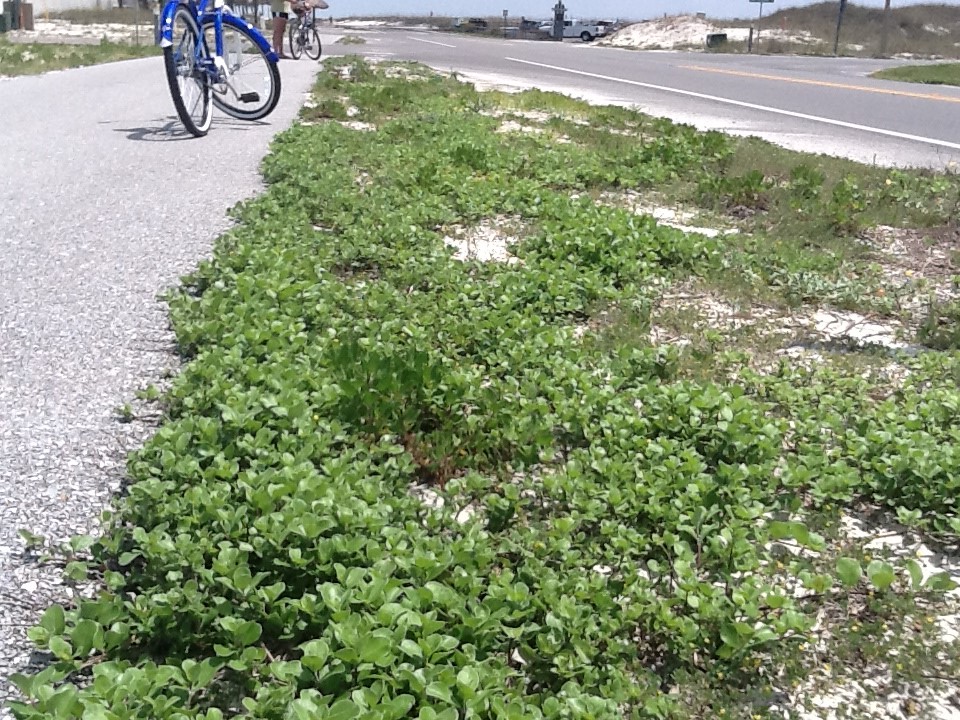
Vitex beginning to take over bike path on Pensacola Beach. Photo credit: Rick O’Connor
Define Invasive Species: must have ALL of the following –
- Is non-native to the area, in our case northwest Florida
- Introduced by humans, whether intentional or accidental
- Causing either an environmental or economic problem, possibly both
Define EDRR Species: Early Detection Rapid Response. These are species that are either –
- Not currently in the area, in our case the Six Rivers CISMA, but a potential threat
- In the area but in small numbers and could be eradicated
Native Range:
Beach vitex is native to the coastal shores of Asian countries bordering the Pacific rim. It is also found in Hawaii.
Introduction:
There are conflicting records as to when it was first introduced to the U.S. One record has it in the country as early as the 1950s. However, there are no records of plants from that stock still existing. Most records suggest the release of the plant occurred in the 1980s when it was brought to North Carolina as a potential ornamental plant. It was then used in dune restoration after a series of hurricanes and became a problem. Thus, it was intentionally introduced.
EDDMapS currently list 649 records of beach vitex. Most are in North Carolina. There are 82 records in Florida and 46 (56%) are in the Pensacola Bay area. We currently have 75 records from the Pensacola Bay area. Not all are reported on EDDMapS due to private property restrictions. Records do occur in coastal Alabama, Mississippi, as well as Okaloosa and Franklin counties in the Florida panhandle.
Distribution is most likely due to the high tolerance of salt water by the seeds and dispersal by currents, as well as intentional plantings by local landscapers and homeowners. Vitex rotundifolia is now a noxious weed in Florida and can no longer be sold.
Within our CISMA there are records in all coastal counties (Baldwin, Escambia, Santa Rosa, and Okaloosa)
Description:
Beach vitex is a perennial plant that initiates from a main taproot and extends herbaceous vines across the surface of the substrate in almost a 360° pattern. The vines can grow as much as 20 feet in length and become more woody with age. As the plant grows, secondary roots extend from each of the nodes from the above ground stems (vines) and becomes more of a shrub, reaching a height of about two feet.
The two-inch leaves are ovate in shape, a light green to blue-green color, and are aligned opposite of each other. They turn a reddish brown during the fall and winter and many plants will lose their leaves completely during this time.
The blossom is a lavender color and made of numerous small petals. The blossoms are present during the spring and summer. They will produce numerous charcoal gray fruits in fall and winter. Each fruit can hold up to four seeds. It has been reported that the plant can produce over 1000 seeds / m2.
Issues and Impacts:
After planting for dune restoration in North Carolina, the plant quickly became a monoculture. It is allelopathic creating a hydrophobic situation in the soil. This situation can cause the decline of native plants, such as sea oats (Uniola paniculata). As the plant becomes more of a shrub it decreases the amount of sunlight reaching the surface further decreasing the smaller native plants and the ability for many to germinate.
This altering of the native dune plant community can have potential impacts on the native faunal communities. There are concerns on its impacts to protected species such as beach mice and nesting sea turtles.
Having a taproot system rather than a fibrous one like the sea oat, can comprise dune integrity during tropical storms. It is known that these dune systems provide protection for natural and developed areas behind them.
Management:
Finding the plants early and removing by hand is the first and best option. The plant is relatively new to the panhandle area and smaller ones are often found. Once the small plants are found, you can simply cut the above ground vine into 2 foot sections and place in a trash bag – you should double bag this. Woody vines may puncture the bag so shorter sections may be needed for those.
Once you reach the taproot you may be able to pull it from the ground, or you may need to dig it out. This method works well in loose dry sandy soils, it may require more digging and cutting if soils are more compacted. If you cannot remove the entire taproot, we recommend spot spraying the remainder with glyphosate. Be careful not to over spray, glyphosate is non-selective and will kill any native plants it comes into contact with.
In cases where the patch of vitex is too large to remove by hand then chemical treatment will be needed. Several studies have been published as to which herbicides are effective. Imazapyr, Triclopyr, and Glyphosate are all products that have been used both in foliage application and cut stem with success. The exact concentrations vary with abundance of plants and surrounding habitats and re-treatments over a few years may be required. We recommend you reach out to your local CISMA or county extension office for more direct help on your situation.
For more information on this EDRR species, contact your local extension office.
References
Invasive Species – Beach Vitex. Rick O’Connor. 2017. UF IFAS Escambia County Blog. http://blogs.ifas.ufl.edu/escambiaco/2017/03/20/invasive-species-beach-vitex/.
Early Detection and Distribution Mapping System (EDDMapS)
https://www.eddmaps.org/
Six Rivers CISMA
https://www.floridainvasives.org/sixrivers/
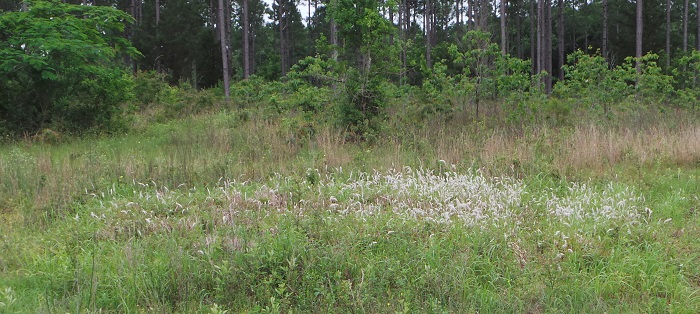
by Jennifer Bearden | Mar 26, 2021
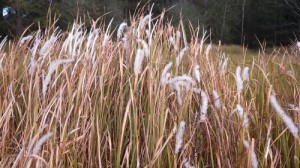
Cogongrass flowering
We’re waging war on an invasive weed, Cogongrass. Cogongrass was accidently brought into Mobile, Alabama in the early 1900’s as packing material. It was later planted in Florida and other states as a potential forage and soil stabilizer. It has low forage value and is on the Federal Noxious Weed List.
This weed can spread through both creeping rhizomes and seeds. It quickly displaces desirable grasses and plants. The roots of Cogongrass may produce allelopathic chemicals helping it out-compete other plants for space. It is drought and shade tolerant. A single plant can produce 3,000 seeds. Cogongrass is yellow/green in color with an off-set midrib and a fluffy white seed head and it grows in circular colonies.
Mowing and burning will not eradicate Cogongrass instead doing so while the plants are flowering can cause spread of seeds. Herbicide options are non-selective and kill most native ground cover such as grasses. Ridding an area of a Cogongrass infestation requires intensive management. For small infestations (less than 20-30 feet in diameter), treat the area with glyphosate once in the fall and once in the spring for 3 years (or until eradicated). For larger infestations, a more integrated approach may be necessary. Deep tilling of the soil may help in some cases.
Cogongrass is not easy to control. It takes a coordinated effort from government agencies and private landowners to work together to rid an area of this invasive weed. For more information, you can go to https://edis.ifas.ufl.edu/wg202 or contact your local extension agent.
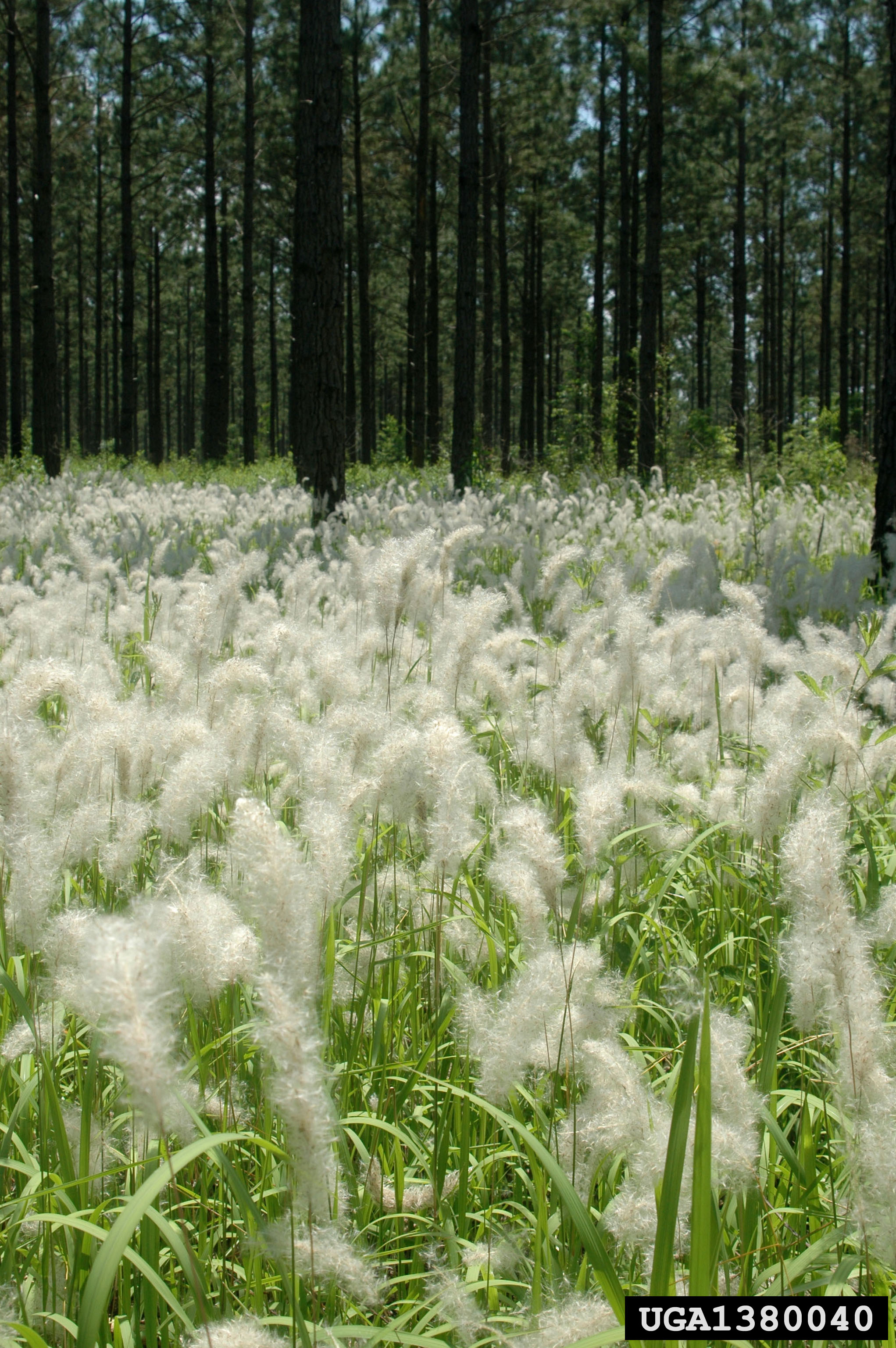
by Rick O'Connor | Mar 26, 2021
Six Rivers “Dirty Dozen” Invasive Species
Cogongrass (Imperata cylindrica)

A relatively new patch of cogongrass recently found in Washington County.
Photo Credit: Mark Mauldin
Define Invasive Species: must have all of the following –
- Is non-native to the area, in our case northwest Florida
- Introduced by humans, whether intentional or accidental
- Causing either an environmental or economic problem, possibly both
Define “Dirty Dozen” Species:
These are species that are well established within the CISMA and are considered, by members of the CISMA, to be one of the top 12 worst problems in our area.
Native Range:
Cogongrass is from southeast Asia.
Introduction:
It was accidentally introduced as an “escapee” from satsuma crates brought to Grand Bay, Alabama in 1912. It was later intentionally introduced into Mississippi in the 1920s as a forage crop and then to Florida in the 1930s for both forage and soil stabilization.
EDDMapS currently list 79,134 records of this plant. All are listed in the southeastern U.S. Most are in Florida and Alabama, but there are records from Mississippi, Louisiana, Texas, Georgia, North and South Carolina.
Within our CISMA there are 13,279 records. This is probably underreported.
Description:
Cogongrass is a perennial grass that can vary in color from a bright-light green when young to a brown-orange when older. It does die back in areas with cold winters and heavy frost and becomes brown. The leaves emerge from the ground in clumps and can reach four feet in height. The blades are 0.5-0.75 inches wide and the light-colored midline is off center. The blades are serrated along the edge. In the spring the grass produces large white colored fluffs of seeds extending above the leaves to be carried by the wind. There are numerous small seeds joined on long hairs of these structures. There is an extensive rhizome system beneath the ground that can contribute to short distance spread.
Issues and Impacts:
The plant spreads aggressively and has been found in ditches, along roadsides, in pastures, timberlands, golf courses, empty lots, and even on barrier islands. It spreads both by seed wind dispersal and rhizome fragmentation. The plant is known to be allelopathic, desiccating neighboring plants and moving in. It can form dense monocultures in many areas.
The serrated edges of the leaves make it undesirable as a livestock forage, a fact not detected until the plant was established. It can cover large areas of pasture making it unusable. In the winter the plant becomes brown and can burn very hot. Timberland that has been infested with cogongrass can burn too hot during prescribed burns actually killing the trees.
It is currently listed as one of the most invasive plants in the United States. It is a federal and state noxious weed, it is prohibited all across Florida and has a high invasion risk.
Management:
The key to controlling this plant is destroying the extensive rhizome system. Simple disking has been shown to be effective if you dig during the dry season, when the rhizomes can dry out, and if you disk deep enough to get all of the rhizomes. Though the rhizomes can be found as deep as four feet, most are within six inches and at least a six-inch disking is recommended.
Chemical treatments have had some success. Prometon (Pramitol), tebuthurion (Spike), and imazapyr have all had some success along roadsides and in ditches. However, the strength of these chemicals will impede new growth, or plantings of new plants, for up to six months. This can lead to erosion issues that are undesirable. Glyphosate has been somewhat successful, and its short soil life will allow the planting of new plants immediately. Due to this however, it may take multiple treatments over multiple years to keep cogongrass under control and it will kill other plants if sprayed during treatment.
Most recommend a mixture of burning, disking, and chemical treatment. Disking and burning should be conducted in the summer to remove thatch and all older and dead cogongrass. As new shoots emerge in late summer and early fall herbicides can then be used to kill the young plants. Studies and practice have found complete eradication is difficult. It is also recommended not to attempt any management while in seed (in spring). Tractors, mowers, etc. can collect the seeds and, when the mowers are moved to new locations, spread the problem. If all mowing/disking equipment can be cleaned after treatment – this is highly recommended.
For more information on this Dirty Dozen species, contact your local extension office.
References
Cogongrass, University of Florida IFAS Center for Aquatic and Invasive Plants
https://plants-archive.ifas.ufl.edu/plant-directory/imperata-cylindrica/
Imperata cylindrica. University of Florida IFAS Assessment.
https://assessment.ifas.ufl.edu/assessments/imperata-cylindrica/.
Early Detection and Distribution Mapping System (EDDMapS)
https://www.eddmaps.org/
Six Rivers CISMA
https://www.floridainvasives.org/sixrivers/









